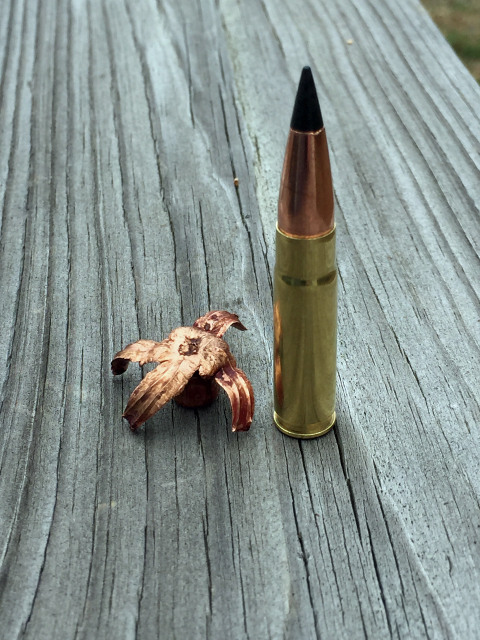A shooting bud of mine, is also an avid deer hunter. He lost too many deer with the 300 Blackout at dusk and stopped using the cartridge. The deer would run off after a good shot placement and he would not find them until the next day, hundreds of yards from where they were hit. This was in areas where the distance was under 50 yards! Bud switched to a AR10 type rifle in 308 Winchester and even then, had problems with bullet expansion through the rib cage. The hunting bullets he is using (I think they were Hornady) would not expand through the thin flesh. Deer would run off and die hundreds of yards later. He altered his point of aim so bullets hit between the shoulder and the neck, and after that, deer drop and die within yards of the point of impact. He has made a couple of three hundred yard shots with his 308 Win and been very happy with the results.
Military rounds have declined in power since the American Civil War. LaGarde, in his book “Gunshot Injuries”, 1914, stated that Civil War muskets created worse wounds than the service rounds of the period. There are lots of pictures and commentary on the wounding capability of round ball and musket balls, and it is all bad. Horrific wounds resulted when one of those huge soft lead bullets hit bone. I have read numerous books from Civil War Soldiers, no one complained about a lack of stopping power, solid hits were immediately disabling. LaGarde's contemporary rounds were 6.5 Swede, 7 mm Mauser, 303 British, 30-06 and 8mm Mauser, etc. It is interesting to find that early 303 British ammunition was lacking in stopping power compared to the 577/450 Martini which resulted in the infamous "Dum Dum" expanding bullets. All of the early, powerful smokeless military rounds have very flat trajectories out to 300 yards, (especially compared to blackpowder rounds) and lethality at 1000's of yards. Militaries wanted neither the recoil, blast, and heavy weight of these pre WW1 cartridges and had decided not to train their cannon fodder to a level of marksmanship to take advantage of the range of the WW1 era full power cartridges, so by the time you get to WW2, Armies are introducing “intermediate” cartridges. Intermediate cartridges are by their very concept, attempts to find the absolute minimum in acceptable lethality. As such, while they will kill, they don’t cause as much trauma as the earlier rounds, and so, animals hit with these rounds had a tendency “not to stay down”.
The 300 Blackout is a latest offering of an intermediate round, and as such, the hoopla is greater than the power of the round.





